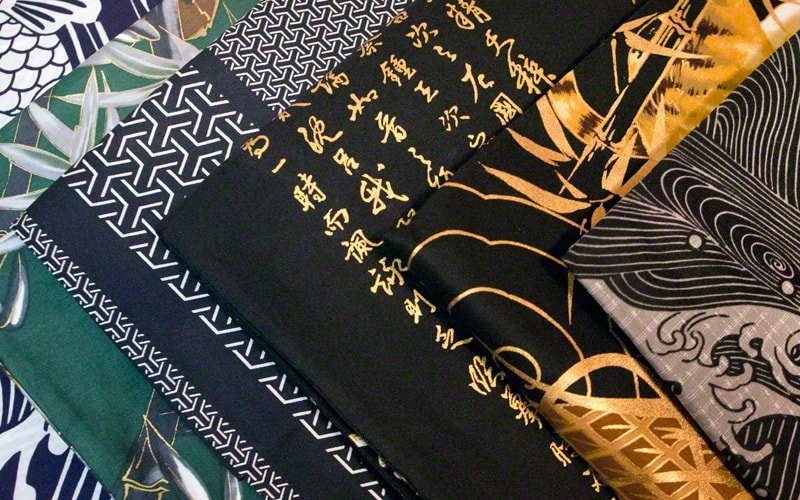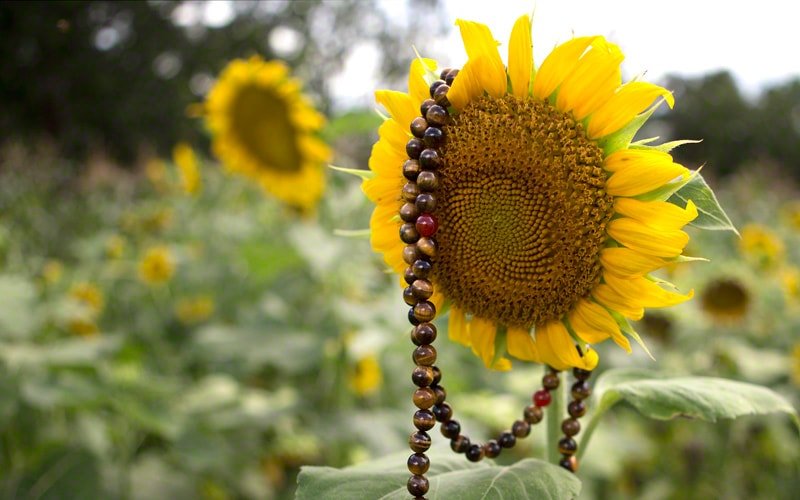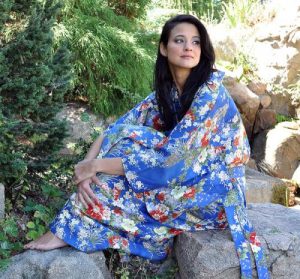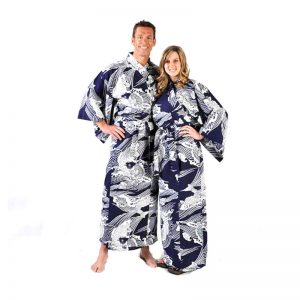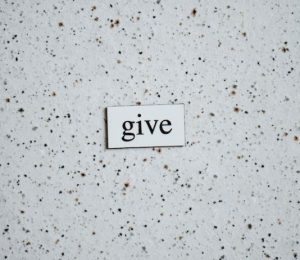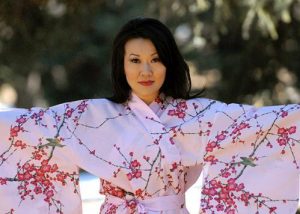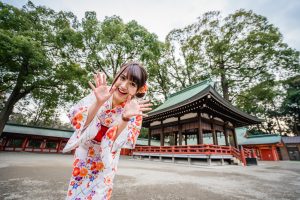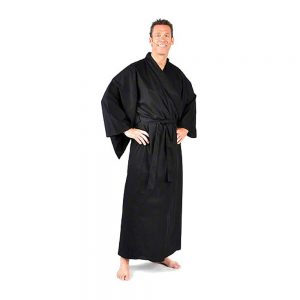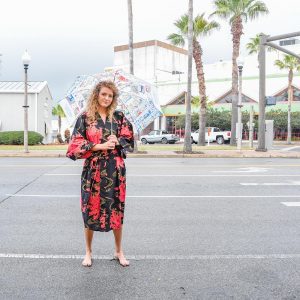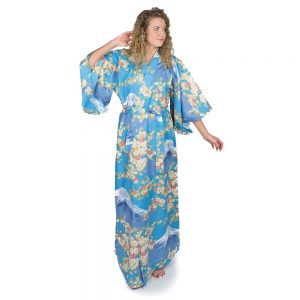We frequently receive questions from friends and customers about how to buy a kimono. Sometimes they ask where to buy a kimono and what should someone know when buying a kimono. Let’s walk through some basics of purchasing an authentic Japanese kimono.
One of the most important aspects of buying a kimono is how you plan to wear it. Is this for lounging? Are you attending an event? What is the event and when? If you simply love Japanese culture and want a kimono to wear as a robe or for lounging, then simple cotton robes are the best choice. Robes made of 100% cotton are easy to care for and good quality garments are machine washable.
A soft cotton kimono or lighter-weight yukata is wonderful for lounging around the house. After a soothing shower, slipping into a kimono is not only practical and easy but is extremely comfortable to wear. The distinctive designs place you in a mood and mind of your own. The designs can be very relaxing to the eye and help you remain calm and destressed after a long day. We often find people wearing one after a swim or as a coverup at the beach. Useful, practical, and stylish – that is what a kimono is all about.
If you are seeking a kimono to wear to a ceremony or special event, a cotton robe is still a good choice. Cotton fabric is available in many grades and levels of quality. A tightly woven fabric with a decent cotton count makes for a long-lasting, frequently worn treasure. One you can wear often for many years. The type of design or print will be important depending on the event you attend. The design should flow with the ceremony or social gathering. Consider it similar to a wedding. How formal is the wedding? How formal is the event? Be practical in your choice and you will not only look great but feel good too.
It is fairly easy to purchase a kimono today. As the popularity has increased, especially in the west, there has also been an influx of dealers or retailers offering these beautiful robes. Shopping online is the easiest. Locate a dealer that has a large selection, quick shipping, especially if you are in a hurry, and easy returns in case it doesn’t fit the exact way you like. One wants to be very careful when shopping online. Like buying anything there are unscrupulous dealers and below-standard retailers trying to take advantage of customers.
We prefer shipping with a dealer that has a long and extensive track record. After all, if a business has been around for over 20 years, it says something about them. In general, a business with a long history shows stability in the market place and their experience will help you find what you are looking for. We receive countless emails each month about foreign-based dealers and the bad experiences customers had with them.
Bad results from shopping overseas include lengthy transit and shipping times. Dealers may offer delivery in a few days but it actually takes over a month to arrive. Taxes, duties and import fees are another issue we hear about. The customer wasn’t told that there may be import taxes due and discover this when they get a bill for $10-$40 for these fees.
Returns seem to be an automatic nightmare for many. Countless unanswered emails and phone calls, translation issues and simple refusals to accept a return are common. Shipping a kimono back to Japan or Asia can be very expensive. Costs range from $25 and up to $45 depending on the level of service, weight, insurance and tracking services.
There are also many dealers who lie about the robes. They ship alternate patterns and prints, use a different fabric and sizing can be far different than what is advertised. A big deception that takes place is where the garment is made. While dealers may claim a Japanese origin, they are often made in China, Viet Nam or Pakistan.
In simple terms, locate a dealer based in the USA. Be sure their reviews provide a positive experience. Look at social media to see they are active and in steady business. Check their listings to see if the Japanese kimono is actually made in Japan. Verify their return policy. Are returns accepted without a lot of fine print and exclusions? Has the online retailer been in business at least 15 years or longer? If the answer is yes, then you should have some confidence in making your purchase and having comfort that the dealer will honor their promise.
This online dealer has been a leading kimono specialist for nearly 30 years….https://www.chopa.com and has one of the best reputations around.

